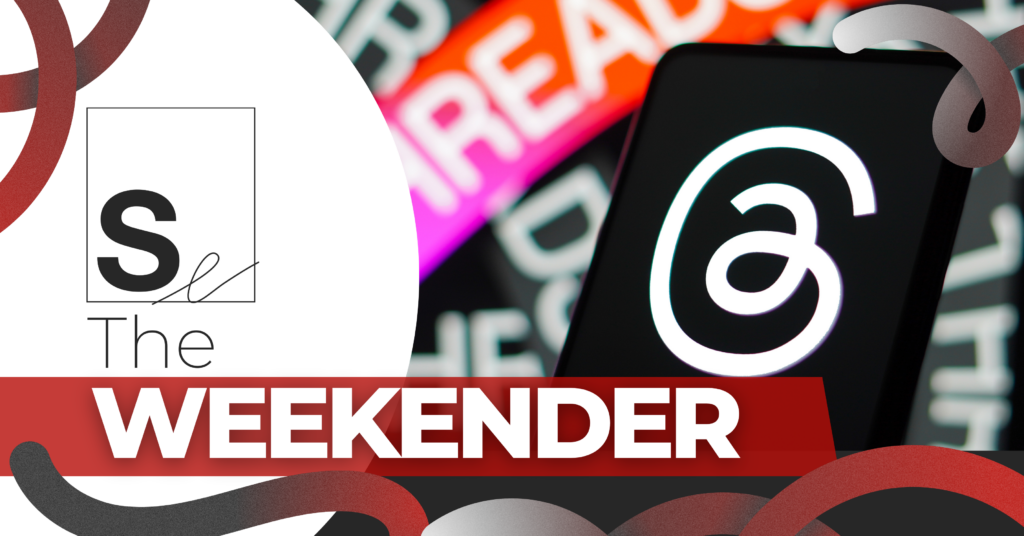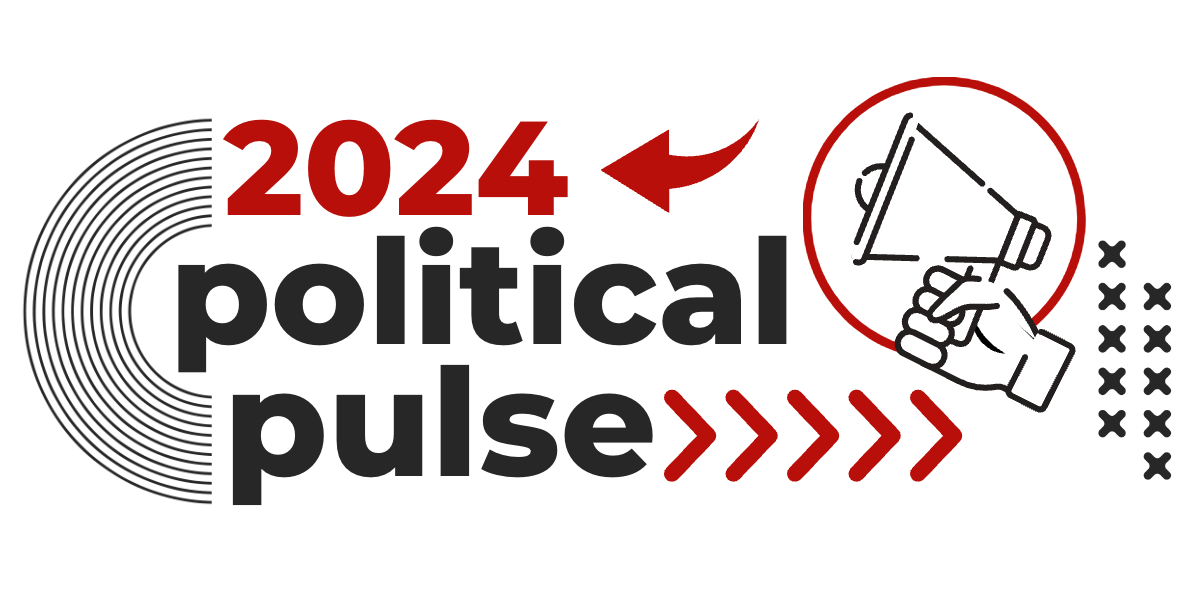DATA POINTS
- $1.78 Trillion: The total amount of student loan debt in the first quarter of 2023.
- 4.9Ibs: The amount of trash the average American throws away in a single day.
- 1,264: The average number of socks a person loses in their lifetime.
- $40 Million: The amount “The Sound of Freedom” movie has grossed to date at the box office.
- 200 Million: The approximate number of Amazon Prime members in the world.
- 35%: The percentage of businesses who currently use AI technology.
 Nontraditional Fundraising
Nontraditional Fundraising
In an unprecedented strategy to attract new donors, North Dakota Governor Doug Burgum this week promised $20 gift cards to 50,000 people who donate $1 to his presidential campaign. Why? To qualify for the much-anticipated August primary election debate stage, 2024 GOP hopefuls must receive donations from “a minimum of 40,000 unique donors to candidate’s principal presidential campaign committee (or exploratory committee), with at least 200 unique donors per state or territory in 20+ states and/or territories,” according to the Republican National Committee (RNC). They must also register at least 1% in three national polls and sign a loyalty pledge to support the eventual party nominee. All before August 21 – two days before the first debate.
Vivek Ramaswamy, another 2024 candidate, is incentivizing fundraising among participants by promising 10% of any money they raise for his campaign. Through an affiliate link, grassroots fundraisers can earn cash and help him reach the debate stage. He hopes this tactic will increase attention among a younger demographic.
Incentives for donations are nothing new, but campaigns have traditionally extended non-cash incentives, such as yard signs, books, t-shirts, or other swag in exchange for donations. The stakes are high to reach the debate stage and the cost to acquire donors through traditional means is likely more costly than simply financially incentivizing donors – particularly among candidates with less name recognition.
Biden Pursues Plan B for Student Loan Borrowers
In June, the U.S. Supreme Court ruled against President Biden’s plan to cancel student loan debt in a 6-3 vote. The plan would have forgiven up to $20,000 of debt for 43 million people, costing the U.S. government approximately $400 billion. Had the plan received the court’s approval, the government would have provided debt relief through an algorithm based on an individual’s debt and income. With the ruling, however, previous payback pauses will effectively end in October, resuming normal loan payments for the foreseeable future.
American support of the plan was divided, with 52% backing Biden’s program, and 49% agreeing with the Supreme Court’s decision against it.
So what’s next? Team Biden and Congressional Republicans have differing ideas. The Administration is pushing a new proposal that cites the Higher Education Act of 1965 authorizing the Department of Education to “compromise, waive, or release loans under certain circumstances.” Plans raised by Republican lawmakers would include a grace period for payments, paying back loans based on income, and pauses of interest. Given that Washington is as evenly divided as the American people seem to be on the issue, finding a resolution on the issue may be… deferred.
Is That a Thread(t)?

The new social platform seeks to be different, promising “positive, productive conversations,” an apparent jab at their competitor’s reputation for divisive rhetoric. Instagram’s boss, Adam Mosseri, says Threads is not a space meant for politics or hard news, encouraging users to instead focus on sports, music, fashion, beauty, and entertainment. Instagram says Threads is adapting built-in defense mechanisms for harmful content and implementing warning signals when users engage with accounts that have been flagged for misinformation.
Hottest Day Ever

The heat records are significant. “This is worrying news for the planet,” the World Meteorological Organization warned. Some climate scientists cite El Niño, a warm phase across the equator, as a leading cause of recent high temperatures and deadly head waves. Many are rightfully concerned with the impact across the globe – from damaged corn in Texas, to water shortages in Spain, and a reduced international GDP.
Time for a Grid Update

The improvements won’t happen for free. Price tags range from more than one trillion to several trillion dollars in the coming decades. However, experts say an updated grid would be cheaper than the economic damage and insufficient resources to maintain the current grid under unexpected weather conditions.
A grid upgrade has a head start, with the Bipartisan Infrastructure Law allocating $13 billion for modernizing the grid and the Inflation Reduction Act guaranteeing up to $250 billion in loans. Bipartisan state-level support continues to grow, too. Indiana Senator Mark Messmer, a Republican, writes that a more reliable grid creates “an energy-independent Indiana along the way.” Minnesota Republican Senator Eric Pratt proposes “clean energy solutions that practically meet the needs of our communities while ensuring the long-term sustainability of our electric grid and move our state towards energy independence.”
A Kick Toward Equal Pay

With more teams playing this year’s Women’s World Cup than ever before and record-breaking ticket sales, increased pay is especially meaningful. The U.S. team’s defender, Crystal Dunn, said: “It means a lot to every player stepping into that tournament because it means that the women’s game has finally taken the steps that we’ve been fighting for.” Although men’s and women’s soccer players still have a significant pay gap, many see the new plan as a significant kick in the right direction.
INTERNATIONAL SPOTLIGHT
What’s New with NATO?
This week, international leaders gathered in Lithuania for the 74th North Atlantic Treaty Organization (NATO) Summit where membership and goals of the organization were on the drawing board. Of note, Turkey approved Sweden’s bid to join the alliance, a largely unexpected move after the Turkish President blocked Sweden’s bid for more than a year, stemming from qualms that the country remains too lenient regarding groups that others consider dangerous. In pursing NATO membership, and since Russia’s invasion of Ukraine, Sweden has dramatically shifted its traditional policy of military non-alignment. Many consider this adjustment to be evidence of Russian President Vladimir Putin’s failure to weaken NATO and halt further expansion of the alliance (and fear of future pushes westward by Russia).
Ukraine also sought NATO membership, but is unlikely to be approved until the dispute with Russia concludes. President Biden backed this decision, saying if Ukraine joins now and war continues, “then we’re all in war. We’re at war with Russia, if that were the case.” Ukrainian President Volodymyr Zelensky has since criticized NATO leaders, calling their considerations “absurd.” Ukraine enjoys the direct backing of many NATO members, but if they were admitted to the organization during a time of military conflict, the member nations would be bound by treaty to not just support, but actively participate in Ukraine’s defense against the Russian invasion – something not yet triggered in the seven decades of the organization’s existence.
FEATURED TWEET




 Nontraditional Fundraising
Nontraditional Fundraising


